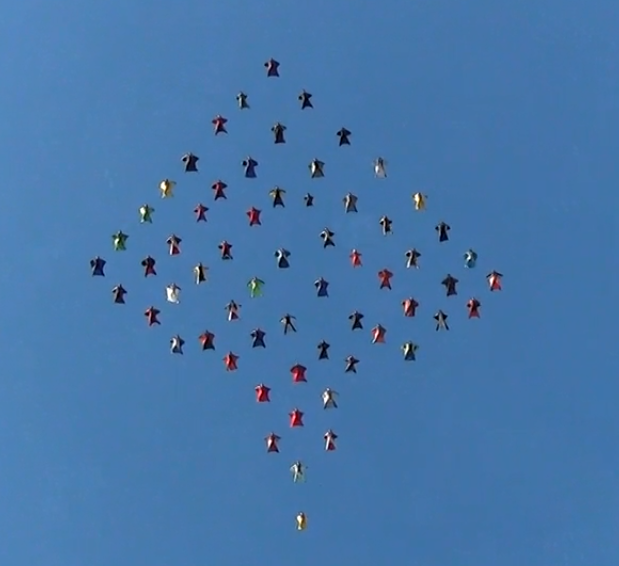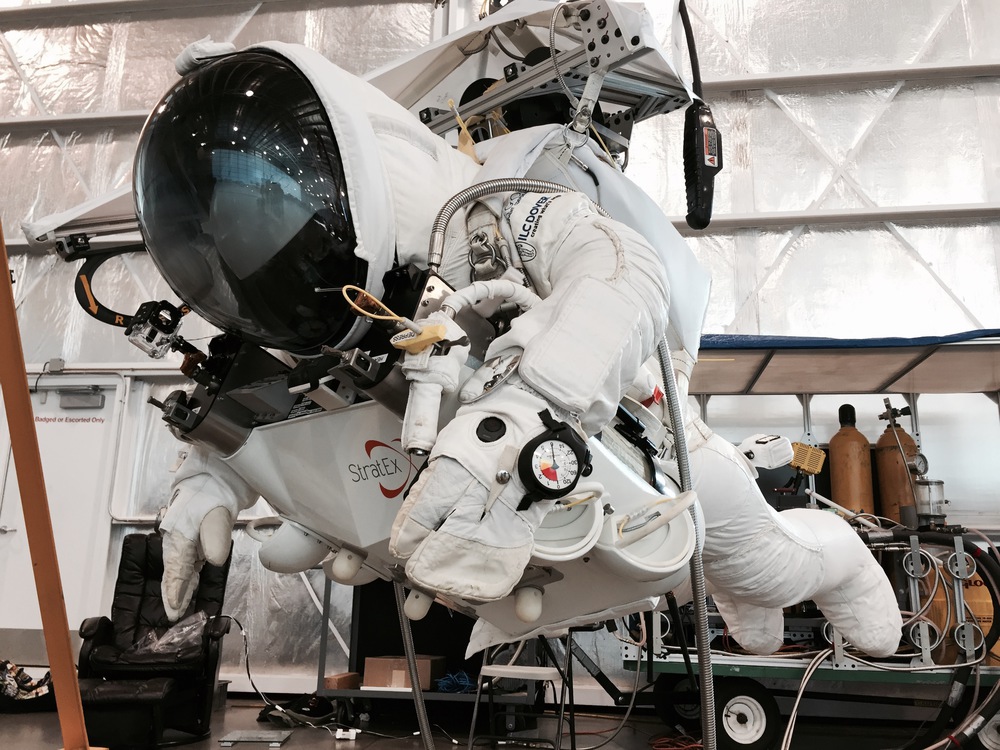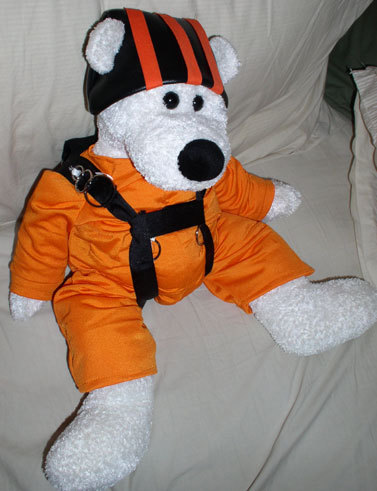Recommended Posts
In addition it allows the skydiver to know that no one else has opened the reserve/ container since the rigger sealed it.
You don't have to assume the FAR implies anything. But if your gear doesn't have a seal, it's a short step to concluding the equiptment isn't in date.
Ken
Ken
kallend 1,621
QuoteIf the seal is not in place, how would a non-rigger skydiver be able to prove their gear was air worthy? Any one could remove the seal and pencil whip themselves an in date reserve.
In addition it allows the skydiver to know that no one else has opened the reserve/ container since the rigger sealed it.
You don't have to assume the FAR implies anything. But if your gear doesn't have a seal, it's a short step to concluding the equiptment isn't in date.
Ken
Well, for that matter anyone can make a seal if they really want to (I certainly could). I'm not sure that the seal "proves" anything at all.
And as someone already wrote, airplanes are shown to be in compliance from their logs. Well, my rig has a log, signed by the rigger. My plane has lots of wired fasteners on it, but none of them are seals.
The question remains, is it actually illegal to remove a seal or to jump a rig that has no seal but is otherwise in compliance with the FARs?
The only sure way to survive a canopy collision is not to have one.
Hooknswoop 19
QuoteThe question remains, is it actually illegal to remove a seal or to jump a rig that has no seal but is otherwise in compliance with the FARs?
Well, the FAR's aren't specific on the matter, so w/o an official ruling from the FAA, the question will remain.
I imagine that if an FAA inspector inspected a rig that didn't have a seal, he probably would determine that the rig wasn't airworthy, since the seal wasn't in place and there is no way to prove that it ever was in place and came off. All they see is that it was supposed to have been sealed and wasn't.
Derek
QuoteThe question remains, is it actually illegal to remove a seal or to jump a rig that has no seal but is otherwise in compliance with the FARs?
Without the seal being intact, how do you tell if the rig is "otherwise in compliance with the FAR's.
Contact your local FISDO office and ask for an opinion on the question. Thats what I did.
The seal is basically two fold. 1) To allow a jumper to ensure that nothing has been done to his reserve. and 2) for a rigger to certify that it is, in fact, still his packjob, and not field repacked.
As soon as the seal is broken, both of those things are in question.
Again, this is just what came to mind, and certainly could be wrong.
j
kallend 1,621
QuoteQuoteThe question remains, is it actually illegal to remove a seal or to jump a rig that has no seal but is otherwise in compliance with the FARs?
Without the seal being intact, how do you tell if the rig is "otherwise in compliance with the FAR's.
Contact your local FISDO office and ask for an opinion on the question. Thats what I did.
How do you tell if a seal is genuine when it would be almost trivially easy for anyone with any handicraft ability to re-use an old one or even fabricate one for yourself? I don't see the presence of a seal proving anything at all.
The only sure way to survive a canopy collision is not to have one.
Hooknswoop 19
QuoteHow do you tell if a seal is genuine when it would be almost trivially easy for anyone with any handicraft ability to re-use an old one or even fabricate one for yourself? I don't see the presence of a seal proving anything at all.
I don't see how you could, once broken, re-use a seal on a reserve I packed. That would be a neat trick though. And if you could, by the time you went through all that effort, it would have been easier to get me to replace the seal or get the reserve re-packed.
Do you have a better idea than the current lead seal and seal thread on the reserve ripcord?
Derek
Quote
How do you tell if a seal is genuine when it would be almost trivially easy for anyone with any handicraft ability to re-use an old one or even fabricate one for yourself? I don't see the presence of a seal proving anything at all.
You cross-check it with the rigger's log-book.
Chuck
Quote... or, on the packing data card for the parachute, harness-container.
The packing data-card is much easier to alter than the rigger's log.
An entry in the log-book is the most reliable indicator the given rigger packed it on the indicated date.
QuoteQuoteQuoteThe question remains, is it actually illegal to remove a seal or to jump a rig that has no seal but is otherwise in compliance with the FARs?
Without the seal being intact, how do you tell if the rig is "otherwise in compliance with the FAR's.
Contact your local FISDO office and ask for an opinion on the question. Thats what I did.
How do you tell if a seal is genuine when it would be almost trivially easy for anyone with any handicraft ability to re-use an old one or even fabricate one for yourself? I don't see the presence of a seal proving anything at all.
Whats your point, or do you have one.
riggerrob 558
And besides, every time my name appears on a packing data card, I pocket $80. I don't care if my signature is genuine or forged, because every time my signature appears on a reserve card, I get paid.
The suggestion that a call to the FAA for clarification simply gets an opinion from an employee and does not constitute a clear and absolute FAR.
It was the practice when I got my rating in the early 70's and even a suggestion from the FAA Examiner that I use a pliers to smash a lead seal on a repack and then scratch my code into the seal until my press arrived.
Quote
Found it interesting even though its a 12 year old thread. Anyway I agree from a previous post that there is nothing that says the seal must remain on though everyone thinks it must, including Riggers.
You've got to be kidding!!!
Why do you think that it states that in the FAR's that it has to be installed in the first place? It is meant to serve a purpose. It is not just an ornate piece that was meant to be removed 5 minutes after the pack job..
Come on people, use some common sense FCOL!
MEL
www.Skyworksparachuteservice.com
piisfish 135
What would YOU do with a custumer who comes back to you saying the seal you placed on his rig was broken (for any reason) ?
Hajo 0
jmfreefly
From what I remember about previous discussions, to be rendered in-date, as long as the pack data card has a repack listed (and is in date), and one can contact the rigger, and the rigger certifys that it is his repack, then it should pass muster. Some DZs I have been to will put forth the effort to call, but most won't (as far as I have seen).
j
Just thinking about that scenario:
the rigger inspects it and repacks it on monday, placing his seal on that.
The guy jumps his rig on tuesday, has to cutaway and uses his reserve, then packs it himself or gets a packjob from someone (just in case).
no DZO would let him jump that on the same DZ, right?
So he shows up at a different DZ and says: "broken seal? hey, what´s the problem? It has a repack done on monday, so what?."
calling the rigger will not prove that it is his packjob..
So in my opinion it is the method for DZOs to check who has packed the reserve and just imagine that the next jump would end up in a fatality. who has to take over rensponsibility?
All eyes on the guy who filled out the packing card ...
With sufficient thrust,
pigs just fly well









Never assume anything when it comes to the law.
Is there a regulation to this effect?
The only sure way to survive a canopy collision is not to have one.
Share this post
Link to post
Share on other sites